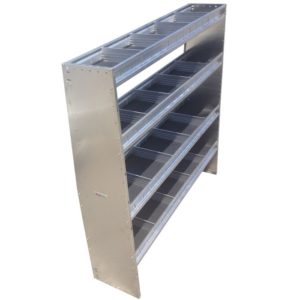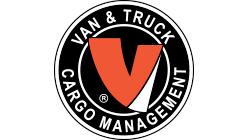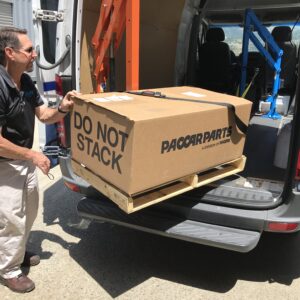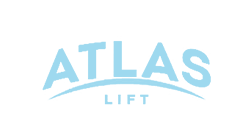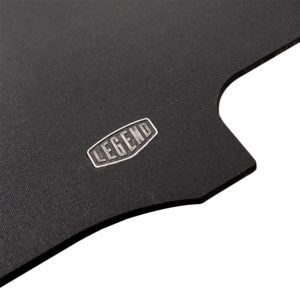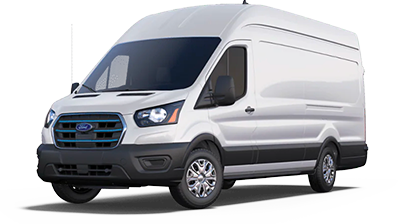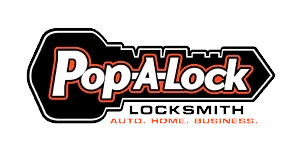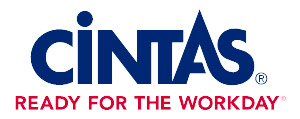The Ultimate 2022 Ford E-Transit Upfit Guide
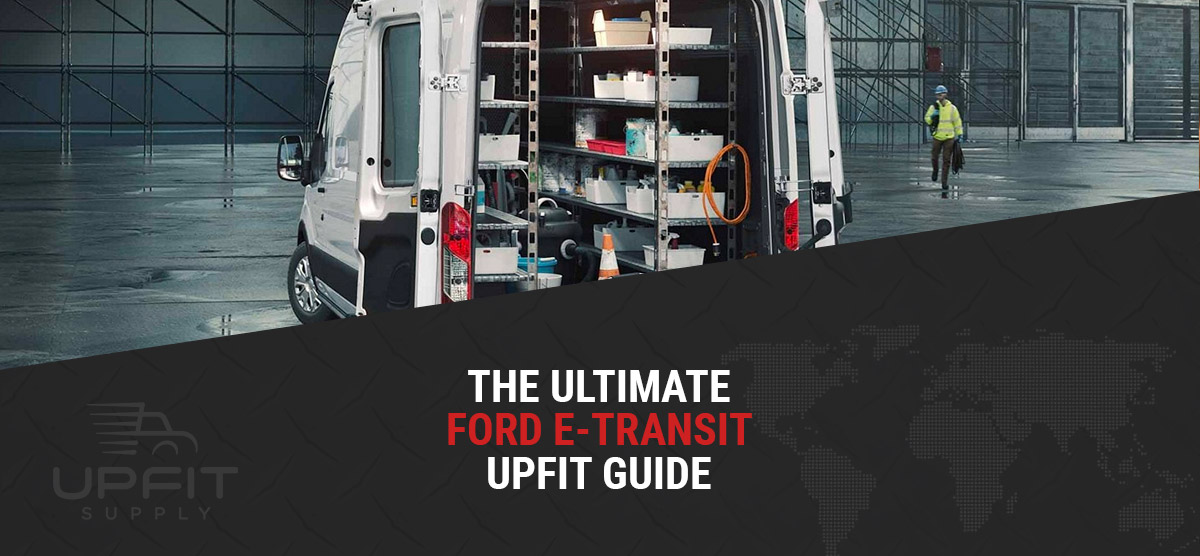
It’s no secret that the automotive world is on a fast pace towards electrification. And with the recent launch of the Ford E-Transit electric cargo van, businesses can join the revolution. In cargo van form (there are also chassis cab and cutaway versions), the E-Transit offers the functionality of a regular Ford Transit van without needing a drop of gas.
And like the conventional Transit, the E-Transit is available in three roof heights (low, medium, or high) and three body lengths (regular, long, or extended). Plus, the advantages of an EV (electric vehicle) van can be compelling: no more gas station visits, reduced maintenance costs, and lower operating expenses. Of course, these vehicles have downsides, such as higher upfront costs, range limitations, and the need for charging solutions.
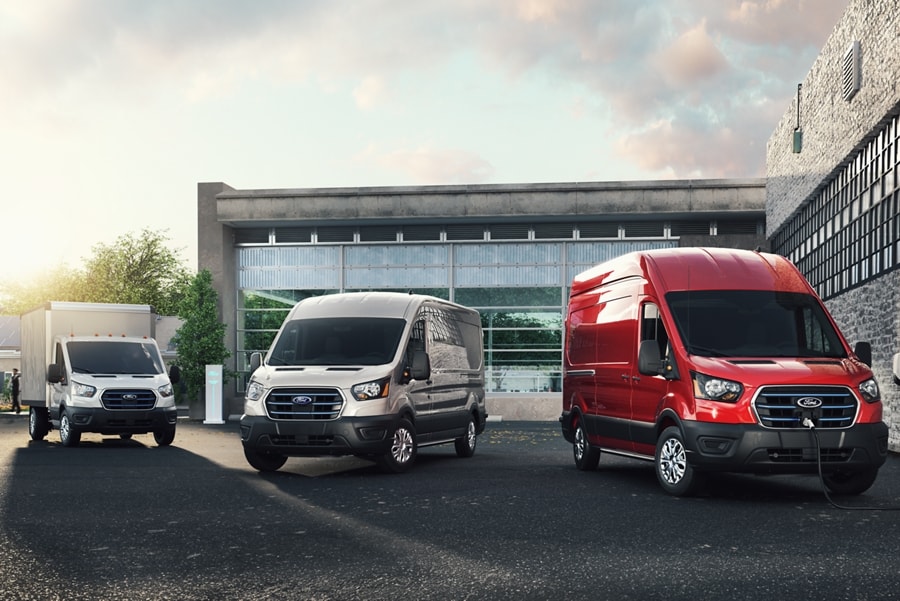
But, there are other considerations beyond these pros and cons if you’re thinking about bringing a Ford E-Transit into your business. Van-dependant companies should recognize what’s involved in upfitting these EVs. Because while there are some similarities with a conventional Ford van, the E-Transit has notable differences that must be accounted for.
Let’s dive into the details about equipping a Ford E-Transit work van.
Understanding Range and Payload
Perhaps the greatest distinction between a gas-powered and electric work van is how payload affects range. Sure, a conventional van with a heavy load will consume more gasoline, but this is quickly addressed by refueling. However, it’s not the case with electric vehicles until there’s a charging station on every corner.
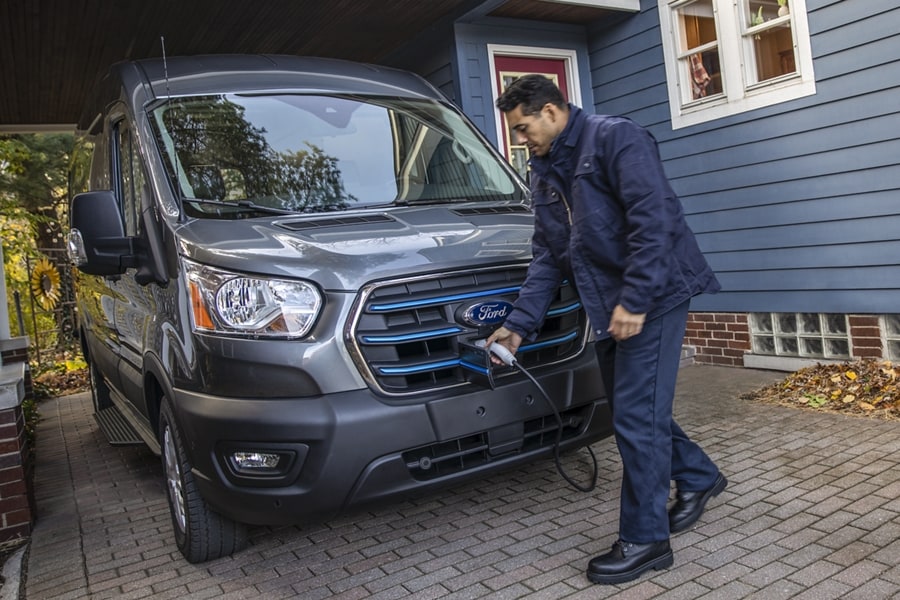
In addition, the maximum range for the E-Transit is 126 miles per full charge. That’s less than half as far as a conventional Transit can travel on a tank of gas. By the way, the E-transit estimated range is for the base model with the low roof and regular body length; larger models have less capacity.
It all means that every pound loaded onto an E-Transit matters. For instance, the base model has a top payload capacity of 3,880 pounds. But, max out this vehicle, and the range will be far below 126 miles. In comparison, the largest E-Transit (with the high roof and extended body length) has a 3,330-pound maximum cargo limit.
Keeping the weight down begins with choosing upfit gear that’s as light as possible. At a fundamental level, this means selecting composite over metal whenever possible. Similarly, aluminum is a better choice than steel. You get the idea.
One example is Legend’s Evolve protective flooring, which weighs less than half of conventional flooring. Meanwhile, an Atlas Lift liftgate can shave off pounds compared to traditional liftgates or ramps. Further, Vantech aluminum shelving is 80% lighter than similar steel units.
-
Sale!
Aluminum Adjustable 4 Shelf Unit – 42″ W x 60″ H x 13″ DOriginal price was: $799.00.$639.20Current price is: $639.20.In Stock.
Add to cart
-
Cargo Van Liftgate for Sprinter, Ford Transit, ProMaster & NV Cargo Vans$1,459.00Out of stock
Read more
-
Sale!
Evolve Lightweight Floor for Ford Transit & E-Transit Cargo VansFrom: $861.9010 in stock. Ships in 1-2 business days.
Select options This product has multiple variants. The options may be chosen on the product page
It’s easy to see that the right upfit gear doesn’t have to handicap an E-Transit’s capacity at the outset.
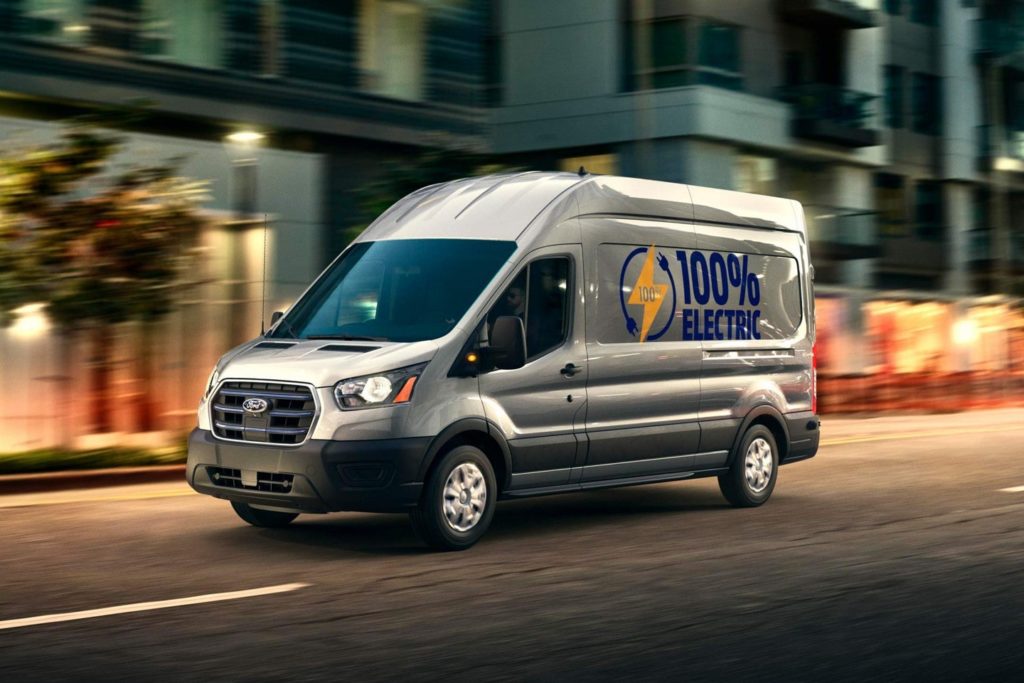
Planning an Upfit for your Ford E-Transit
Choosing the best equipment for an E-Transit also involves advance planning, with a focus on three areas.
- Identify Needs: This step involves asking a simple question. What benefits do I want from upfitting? These improvements may offer improved vehicle protection, better storage capacity, enhanced worker safety, or increased van functionality. And, it’s not unusual for upfitting to reflect a combination of many or all of these advantages.
- Confirm Van Details: Upfitting frequently involves custom-made components for particular work van configurations. So, you’ll want your E-Transit’s specs (roof height and body length) ahead of time. If needed, the Ford dealer can provide a build sheet that confirms the details in writing.
- Set A Timeframe: It can be helpful to plan out an upfitting schedule, especially if you’re installing multiple upgrades. Adding everything at once minimizes downtime while stretching things out can help the budget.
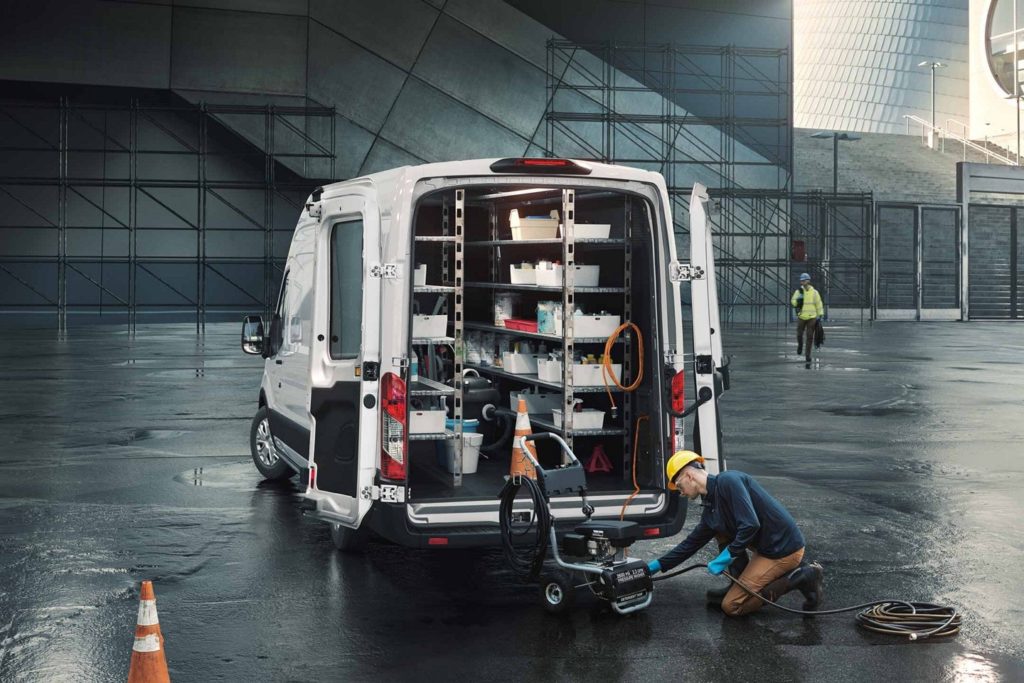
Identifying Upfit Areas
Determining what needs upfitting with an E-Transit is no different from a gas-powered Transit. You’ll want to pinpoint what areas require an upgrade, including:
- Functionality: Improving worker efficiency not only helps the bottom line but aids in employee satisfaction. These upfits can involve dedicated ladder storage solutions, tailored shelving and bins, and integrated workbenches.
- Worker Protection: Keeping staff safe is a fundamental obligation of every employer. One way to commit to this is by adding no-slip flooring or a back-friendly liftgate or ramp. Such equipment sends a message that your company is concerned about employee well-being.
- Vehicle Protection: There are two aspects to protecting any work van; limiting intrusions from bandits and preserving vehicle condition. So, upfitting plans for an E-Transit should consider the benefits of bulkheads and partitions, supplemental locks, windows screens, seat covers, and flooring.
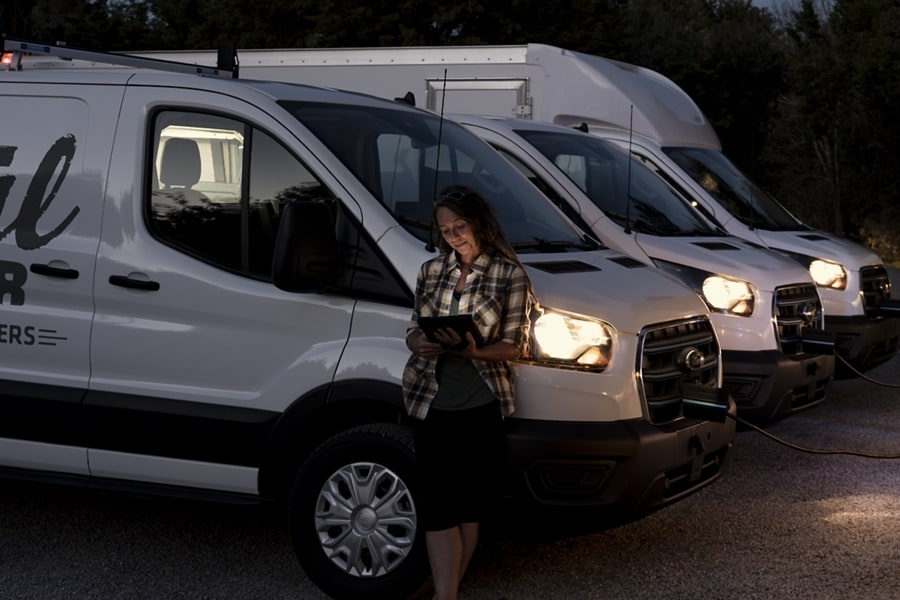
Planning for Installation
The final part of upfitting a Ford E-Transit comes down to installation. But because of the unique nature of this electric van, standard installation techniques may require alterations. For instance, drilling into the floor of the E-Transit is ill-advised as such action can damage the battery.
Even if you or someone on your team has installed upfit gear on a conventional van, don’t assume these methods and skills automatically transfer to the E-Transit. Instead, turn to Ford and the relative aftermarket equipment manufacturer for installation guidance.
It can even be helpful to hire a professional with E-Transit experience to do the work or advise staff about the proper installation procedures. This additional assistance can be a great starting point when upfitting an E-Transit fleet. If nothing else, let an expert help with the first van’s upfit installation.
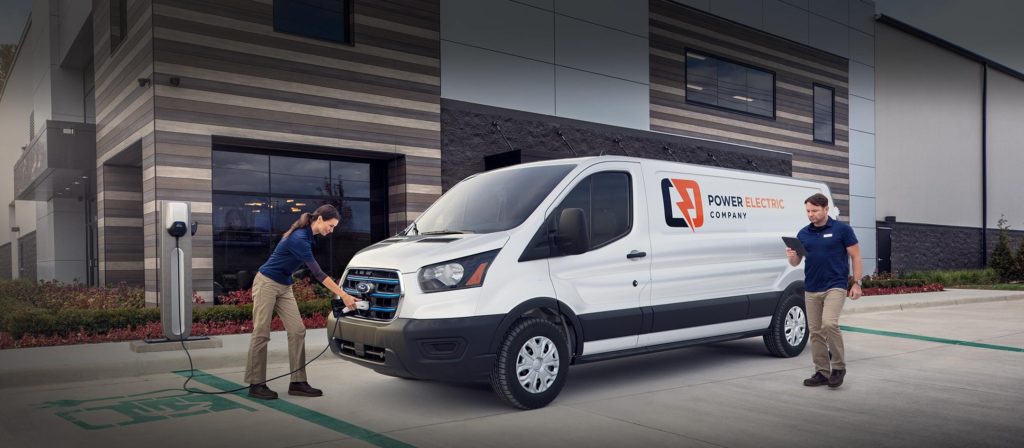
Upfitting Your Ford E-Transit Work Van
You don’t have to go it alone when it comes to work van upfitting and the Ford E-Transit. Let the experts at Upfit guide you through the process. We can advise on the best equipment, recommend resources, and provide overall support as your E-Transit is adapted for your business. Get started by contacting us for personalized service.
